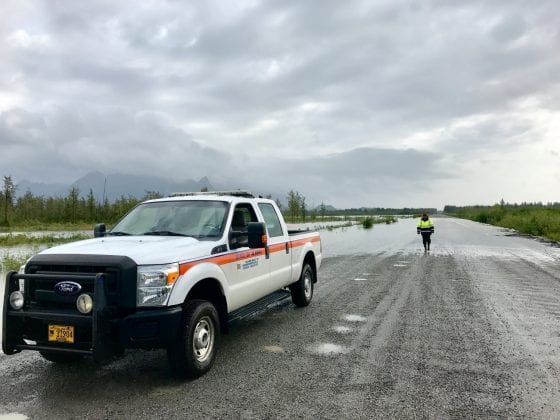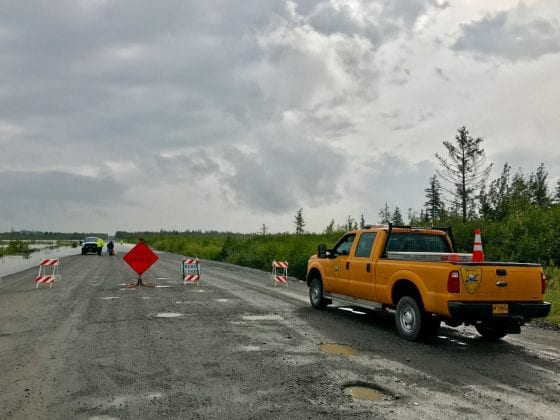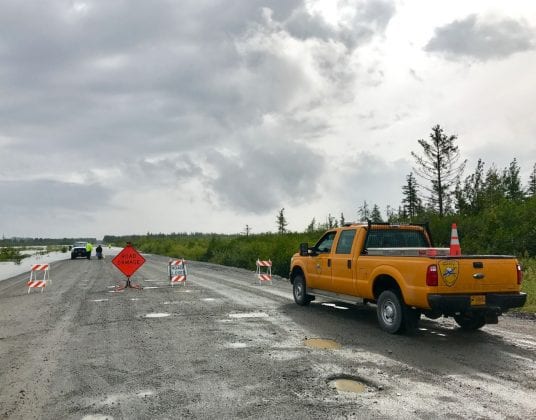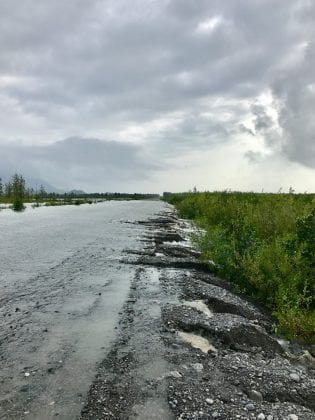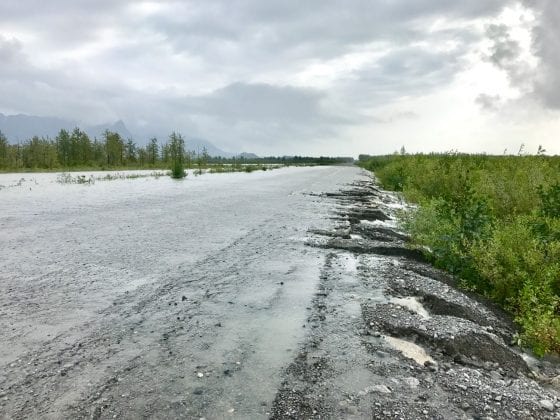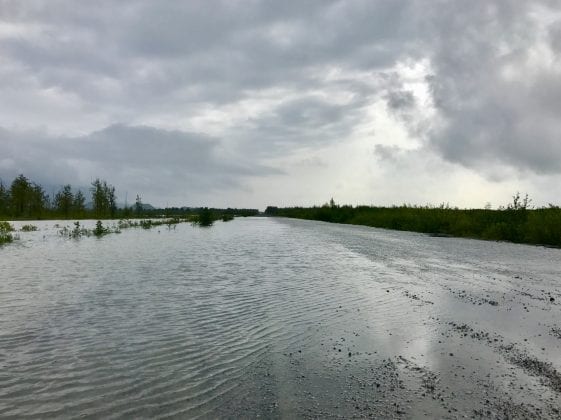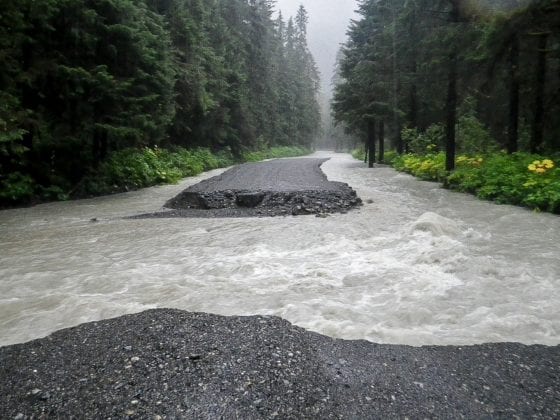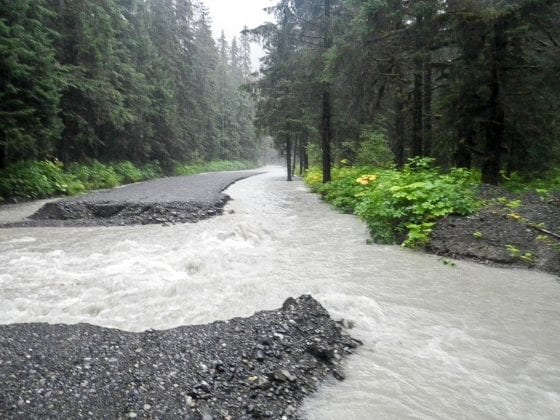A 50-foot length of Power Creek Road washed out for the second time in a month on Aug. 29, in the aftermath of seven inches of rainfall in just 48 hours.
“Power Creek Road is currently closed,” said Meadow Bailey, communications director for the Alaska Department of Transportation and Public Facilities. “We are monitoring the situation and will make repairs when the weather improves and the water subsides.”
About half a mile of Power Creek Road is under a foot of water, and there’s a 50-foot long section where water is about four feet deep and crossing the road, she said.
It is the same section of road which washed out earlier this month and was repaired by DOT just over a week ago, she confirmed.
Of concern, in addition to the road closure, is the potential exposure of the Power Creek Hydroelectric Project’s transmission cable, and lack of access to that power plant.
Stormy weather on Aug. 10-13 dropped nearly six inches of rain on Cordova and caused a severe washout on Power Creek Road, unearthing about 50 feet of a buried transmission line that carries Cordova’s primary power supply into town.
As of press time, the cable was still buried in the road.
DOT made improvements to the subsurface of the road after that last washout, Bailey said.
“We made improvements to the face of the road. We put heavier rock down, and we don’t expect the hydro cable to be exposed in this washout. The work we did to Power Creek Road has reinforced it enough to keep it from disrupting the cable,” she said.
This section of the road is traditionally a water crossing during times of peak water in Power Creek, Bailey said.
Washouts on Power Creek Road come as no surprise during seasonal storms.
“The area is traditionally a water crossing and the repairs were made knowing that, to protect the base of the road, and the cable. The way the road is now isn’t going to prevent the water from crossing, or prevent a washout. Those are the long-term solutions we will be looking at,” she said.
August rains continue, and don’t show signs of letting up soon.
Cordova’s cumulative precipitation through Aug. 29 is 21-inches and counting, according to Rob Campbell, an oceanographer at the Prince William Sound Science Center, who drew data from the SNOTEL weather station atop Mt. Eyak.
The SNOTEL (SNOpack TELemetry), is a remote backcountry weather station that measures precipitation and transmits the date wirelessly, run by the Department of Agriculture’s Natural Resources Conservation Service.
Cordova Electric Cooperative’s CEO Clay Koplin, also the city’s mayor, said CEC switched to diesel power generation on the evening of Aug. 29, as a precautionary measure.
“The added risk of damage to our underground power lines, or to the Power Creek hydroelectric plant by trying to operate it without access is too risky,” he said. “We can’t afford unnecessary damage to this critical plant, or inflict unnecessary outages on our residents. We will monitor and evaluate the storm’s progress through the evening, and make calls as the storm unfolds.”
Koplin said he hopes to learn more from DOT about the scope and schedule for permanent repairs.
In the meantime, Cordova’s DOT personnel were providing quick response to the Power Creek Road damage and communicating regularly with CEC, he said.
The big question, Koplin said, is how quickly those permanent repairs can be moved forward?
While he understands the need for federal partnerships, he said he doesn’t see how the road will survive this season, much less the two-to-three years he figures the normal STIP projects takes to move forward. He planned to speak with DOT this week and to see how Cordova as a community can help expedite a permanent solution.
“There’s little else CEC or the city can do as of right now. It is a state road,” Koplin said.
“We would absolutely like to have a permanent solution to this,” said City Manager Alan Lanning. “We’re working toward that.”
DOT is continuing to look at options to solve the situation permanently, with CEC’s input and involvement, but it is still too early to say what those options are or how much the repairs may cost, Bailey said.
“Crews plan to conduct a site survey in September, we’ll work on a plan after that. The timeline will depend on the type of work to be completed. Each time we make repairs to this road we are able to improve the road’s integrity in that location,” she said.
